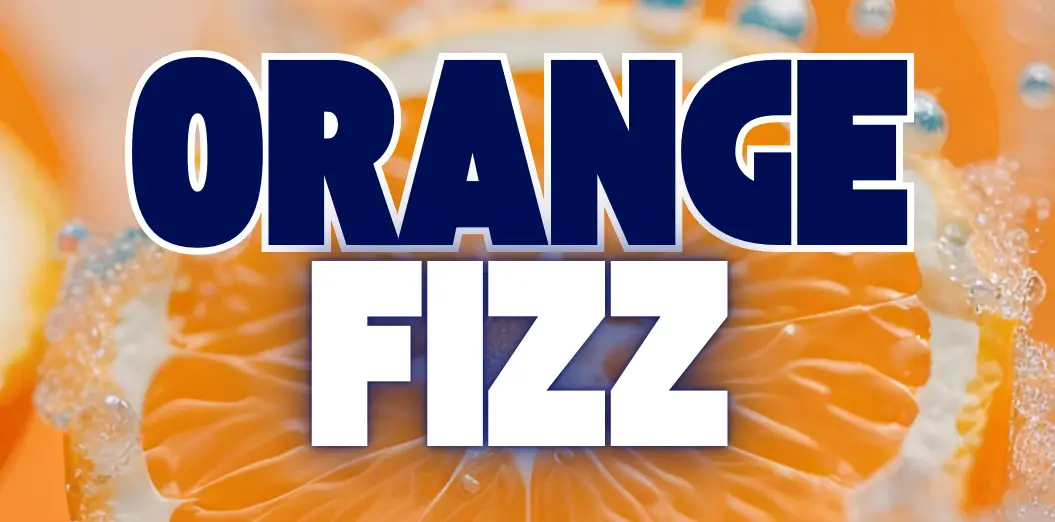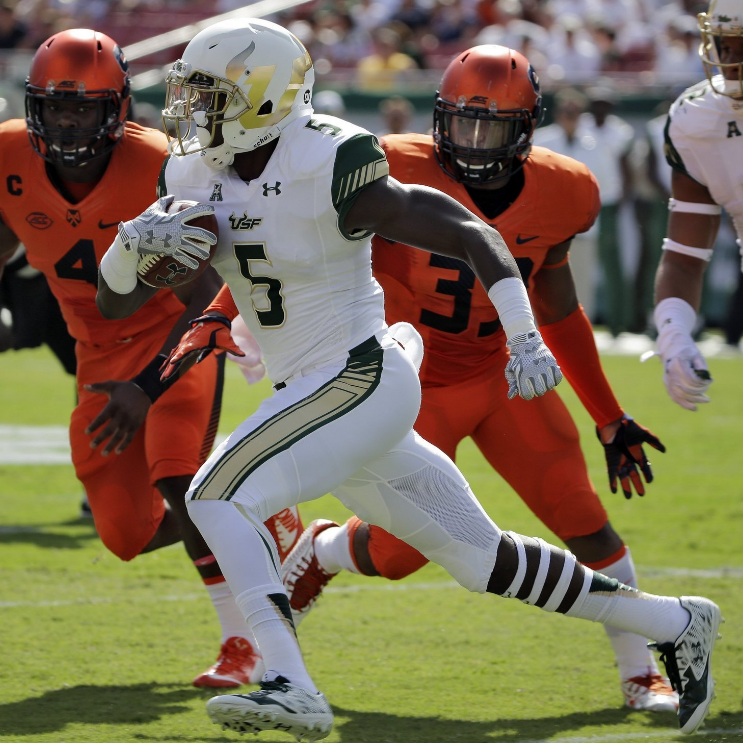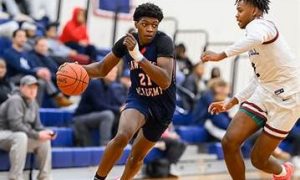When searching for a positive takeaway from Syracuse’s 62-28 loss to Louisville, some Orange fans likely settled on this: the defense has nowhere to go but up. It’s tough to imagine a way for the unit to play as poorly as it did against the Cardinals. At this point, you’re probably sick of hearing these numbers, but they’re worth repeating — UL chewed up 845 yards (a new ACC record) and did it with a balanced attack, gaining 431 through the air and 414 on the ground.
It’s the latter number that should concern SU supporters leading up to Saturday’s showdown against South Florida. The Bulls feature one of the nation’s most dangerous rushing attacks, spearheaded by a dynamic dual-threat quarterback and an elite, NFL-caliber running back. Junior signal caller Quinton Flowers pairs with classmate Marlon Mack to form a backfield that terrorized the American Athletic Conference in the second half of last season and appears to have carried the positive momentum into 2016.
At this time last year, USF seemed destined for its fifth straight losing season. The team hadn’t won more than four games since 2011, when Skip Holtz was still calling the shots, and when it opened 2015 with a 1-3 start, head coach Willie Taggart must have felt his seat heating up. Then, the switch flipped — South Florida turned its season around, fittingly, against Syracuse, with a dominant 45-21 victory over the Orange in Tampa. Flowers was nearly flawless in the win, completing 15-of-22 passes for 259 yards and two touchdowns (and no interceptions) and adding 55 yards and another score on the ground. Mack roasted SU for 184 yards on 20 carries, and found the end zone twice.
Including that explosion, the Bulls averaged more than 37 points and won seven of their final nine games. Flowers and Mack both broke program records — the QB’s 34 total touchdowns and the RB’s 1,381 rushing yards each set new marks. Driven by a high-octane running game, USF’s offense found a new gear down the stretch, and this year, despite the loss of three starters on the offensive line, Taggart’s team has picked up right where it left off.
In its first two games (both 30-point wins), South Florida averaged 293 rushing yards, good for 11th-most in the country. Granted, the Bulls recorded those numbers against Towson and Northern Illinois, but any time an offense is piling up nearly 300 ground yards per game, opposing defenses should be worried — and again, Syracuse’s run defense hasn’t exactly been stout this year.
In last year’s matchup, USF shredded the Orange with the zone-read, and that could certainly happen again on Saturday. Last week, SU defensive ends Chris Slayton (not very quick at 296 pounds) and Kendall Coleman (a freshman) struggled to keep contain on Lamar Jackson. That might be the case for every Louisville opponent — the Cardinals QB is a transcendent player and a Heisman front-runner — but together, South Florida’s backfield combination is as lethal as Jackson is by himself.
Flowers and Mack benefit from what I like to call the “Mo Williams Effect.” Williams, a veteran NBA point guard, made the NBA All-Star Game in 2009 almost entirely because he played alongside LeBron James, who, perhaps more than anyone in league history, always makes his teammates look better than they are. Flowers and Mack are both supremely talented players in their own right, but become exponentially more dangerous when they share a backfield.
Against Louisville, Syracuse experienced the Reverse Mo Williams Effect: no one could make a tackle, so everyone ended up looking bad. Jackson burned through each level of the Orange defense with little to no resistance. Unless something changes, South Florida could do the same on Saturday.




















